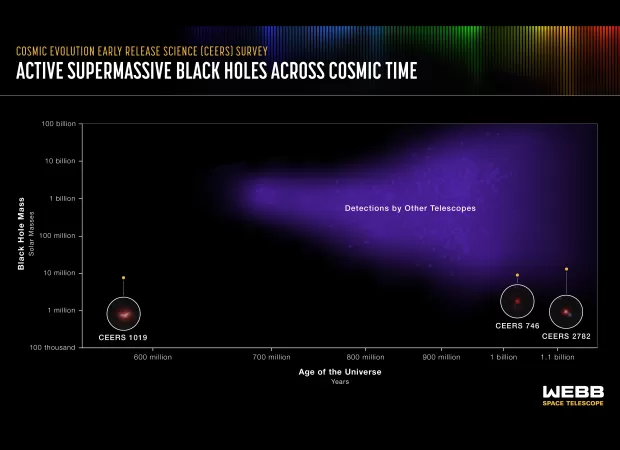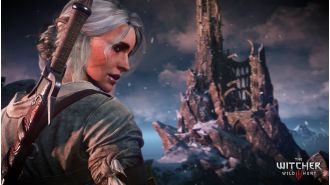Scientists spot most distant active supermassive black hole, 13.1B l.y. away.
It's far away - 13.4 billion light-years away.

Researchers have made an incredible breakthrough with the James Webb Space Telescope - the discovery of the most distant active supermassive black hole to date. The black hole, known as CEERS 1019, is located in a galaxy 570 million years after the Big Bang.
What makes this discovery so unique is the size of the black hole. Unlike other supermassive black holes that typically contain more than a billion times the mass of the Sun, CEERS 1019's black hole only clocks in at around nine million solar masses - which is much smaller than those found in more recent galaxies.
The evidence of this discovery was provided by JWST's Cosmic Evolution Early Release Science Survey, led by Steven Finkelstein, a professor of astronomy at the University of Texas at Austin. Rebecca Larson, a recent PhD graduate at UT Austin and the lead researcher of the study, said, "Looking at this distant object with this telescope is a lot like looking at data from black holes that exist in galaxies near our own. There are so many spectral lines to analyze."
In addition, the researchers also identified two more smaller black holes that were 1 and 1.1 billion years after the Big Bang. JWST also identified 11 galaxies that existed when the universe was 470 million to 675 million years old.
The team was also able to determine the star-formation rate of the galaxy by pinpointing the amount of gas the black hole was ingesting. Jeyhan Kartaltepe, an associate professor of astronomy at the Rochester Institute of Technology in New York, said, "We're not used to seeing so much structure in images at these distances. A galaxy merger could be partly responsible for fuelling the activity in this galaxy's black hole, and that could also lead to increased star formation."
The discovery of the two smaller black holes was also significant. Dale Kocevski, of Colby College in Waterville, Maine, said, "The central black hole is visible, but the presence of dust suggests it might lie within a galaxy that is also furiously pumping out stars. Researchers have long known that there must be lower mass black holes in the early universe. Webb is the first observatory that can capture them so clearly. Now we think that lower mass black holes might be all over the place, waiting to be discovered."






